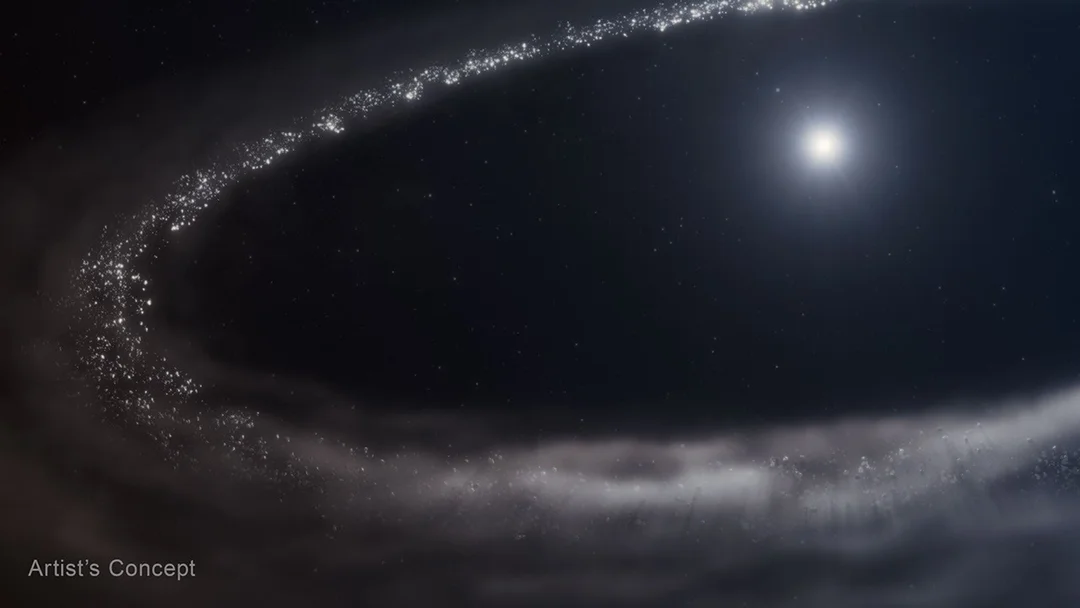
James Webb Telescope Detects Frozen Water Around Distant Star: Key to Planet Formation?
The James Webb Space Telescope (JWST) has made a groundbreaking discovery, detecting water ice drifting around a distant, sun-like star. This finding provides vital clues about how the fundamental ingredients for life are delivered to young, forming planets beyond our solar system.
Astronomers have long suspected the presence of water ice in the cold, outer regions of planetary systems. Our own solar system offers compelling evidence, with icy moons like Enceladus, Ganymede, and Europa harboring vast amounts of frozen water, some even potentially concealing subsurface oceans.

The discovery centers on the star HD 181327, located approximately 155 light-years away in the constellation Telescopium. At just 23 million years old, HD 181327 is a cosmic youngster compared to our 4.6 billion-year-old sun. It's surrounded by a broad, dusty debris disk, teeming with the building blocks of planets.
"HD 181327 is a very active system," explains Christine Chen, a research scientist at Johns Hopkins University. Frequent collisions between icy bodies in this disk constantly stir up fine particles of dusty water ice, making them easily detectable by JWST.
Published in the journal *Nature*, the findings suggest that these "dirty snowballs" of ice and dust could play a crucial role in delivering water to future rocky planets. As planets form within the disk, comets and other icy bodies could collide with these young worlds, seeding them with the water necessary for life – a process believed to have contributed to the early Earth's water supply.
JWST data also reveals that most of the water ice is concentrated in the outer regions of the disk, where temperatures are sufficiently low for it to remain stable. Closer to the star, the ice becomes scarce, likely vaporized by ultraviolet radiation or locked within larger, undetectable planetesimals.
The debris disk around HD 181327 is remarkably similar to our own solar system's Kuiper Belt during its early stages. NASA also confirms that by using detailed data known as spectra, researchers confirmed the presence of crystalline water ice – definitive evidence what astronomers expected. Water ice is a vital ingredient in disks around young stars – it heavily influences the formation of giant planets and may also be delivered by small bodies like comets and asteroids to fully formed rocky planets.
Chen further notes the striking similarity between this data and JWST's recent observations of Kuiper Belt objects in our solar system. This strengthens the idea that similar processes are at play in both systems.
The discovery was made possible thanks to JWST's Near-Infrared Spectrometer (NIRSpec), which detected the signature of water ice at a wavelength of 3 microns. This “Fresnel peak” is caused by the refraction of light by water-ice particles, similar in size to those found in Saturn's rings.
This water-ice reservoir could be instrumental in the development of any planetary system around HD 181327 and may deliver water to the nearby planets around. Although, planets have not yet been detected in the system.
The ultraviolet light from the star seems to be vaporizing the water ice, but something is replenishing it. Collisions between dwarf planets, cometary nuclei, and micrometeoroids are the very likely reasons.
What does this discovery mean for the search for life beyond Earth? Does the presence of water ice around HD 181327 increase the chances of habitable planets forming in that system? Share your thoughts in the comments below!